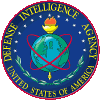

North Korea signed the Nuclear Nonproliferation Treaty in late 1985, but it has not signed the safeguards and inspection agreement for the International Atomic Energy Agency. The Agency granted an 18-month extension to the normal 18 months necessary to administer and sign such agreements. Although the time limit has passed, after much discussion and many questions regarding the agreement's administration, North Korea has yet to sign.
Chemical Weapons
North Korea is capable of producing and employing chemical weapons that virtually all the fire support systems
in its inventory could deliver, including most of its artillery pieces, multiple rocket launchers (including those
mounted on CHAHO-type boats), and mortars. Some bombs the Air Force employs also could deliver chemical
agents, as could the FROG or the SCUD missile.
North Korea has at least eight industrial facilities that can produce chemical agents; however, the production rate and types of munitions are uncertain. North Korea has the capability to produce nerve gas, blood agents, and the mustard-gas family of chemical weapons. Some estimates of chemical stockpiles run as high as 250 metric tons.
Chemicals could increase the impact of a surprise attack. If the North should use this option, it would have an advantage over forward-deployed South Korean and US forces. Nonpersistent chemical agents also could be used to break through defensive lines or hinder a South Korean counterattack's momentum. Persistent chemical agents could be used against fixed targets in the rear areas, such as command and control elements, major lines of communications, or logistic depots. Not only do these weapons enhance North Korea's offensive capabilities, but this chemical capability could deter South Korea or the United States from using chemicals during hostilities.
Chemical training and exercises have increased consistently over the years --- even civilians receive training. North Korea is aware that chemical weapons could be used during a conflict.
Biological Weapons
Biological warfare has not received the same attention as chemical or nuclear warfare. This could be because
North Korea lacks the technical expertise or because the difficulty in controlling biological warfare makes it a
less desirable option. North Korea realizes that biological weapons are as dangerous to its own forces as they are
to South Korean or US forces, and the North's limited medical services would make the agents more lethal.
Therefore, using biological agents is not a likely option. However, if North Korea did choose to employ
biological weapons, it probably could use agents like anthrax, plague, or yellow fever against water and food
supplies in the South's rear area.
Indigenous Weapon Production
Since the mid-1980s, North Korea has produced, deployed, and exported a SCUD-type, mobile
surface-to-surface missile. From deployment locations near the Demilitarized Zone, SCUD-type missiles can
target over two-thirds of South Korea. North Korea probably deploys the missiles in brigade-sized units of 12 to
18 launchers.
The SCUD-type missile is not very accurate and would be used against large, soft, area targets. The Soviet SCUD can be armed with nuclear, chemical, or conventional high-explosive weapons.
North Korea's capability to produce a SCUD-type missile not only affects the power balance on the peninsula but also affects other regions. North Korea exports SCUDS for hard currency or oil. This old but reliable system is operational in the armed forces of the USSR, many East European and Middle Eastern countries.
Continued ballistic missile technology and production development could provide Pyongyang with a system capable of threatening other countries in Northeast Asia.
Kim Chong-il, President Kim Il-song's oldest son, was born on 16 February 1942. Most sources place his birth in Khabarovsk, USSR. However, North Korean officials claim that he was born in Korea near the Manchurian border. In 1945, he returned to Korea with his family from the Soviet Union. He reportedly studied at an East European school but, for unknown reasons, did not graduate. He completed his schooling in the Political Economy Department of Kim Il-song University in 1963 and subsequently joined the Korean Workers' Party Organization Department, where he produced several movies --- a medium that is of continuing interest to him.
Kim's political role in the 1970s was largely that of chief interpreter, protector, and propagator of his father's beliefs. In 1980, North Korean officials publicly acknowledged Kim's status as heir apparent, and no evidence is present of any major internal opposition to his succession. Although the Chinese and the Soviets have accepted succession to power, neither has been enthusiastic about the arrangement. The senior Kim continues to be active in party affairs, greeting foreign visitors and probably managing international policy. The younger Kim has begun to speak out about the economy, has been noted giving "on-the-spot" guidance on various internal matters, and has been credited with directing terrorist acts against South Korea.
For the past decade, Kim Chong-il's father has gradually given him more power and responsibility to ensure that the elder Kim's name, reputation, and policies continue after his death.
